Low and Slow Smoked Spare Ribs
On July 25, 2023
This post may contain affiliate links. Please read our disclosure policy.
Smoked Spare Ribs are a staple on BBQ restaurant menus because they are flavorful, juicy, and simple to prep. This recipe keeps things easy for the backyard with a classic dry rub seasoning blend and a low and slow smoking process. Put these on mid-morning and you’ll have perfectly moist and tender ribs by dinnertime.

What are Pork Spare Ribs?
Pork spare ribs are the full rack of ribs on the lower/belly side of a pig. Fattier than baby back ribs, spare ribs are the preference for BBQ restaurants because they have plenty of intramuscular fat to stay nice and juicy through the smoking process. St. Louis style ribs are a trimmed-down version of full spare ribs.
Full spares can occasionally be difficult to find in grocery stores, but if your local shop carries them you are likely to find a really great per pound price on them. I often stock up on spare ribs when my store gets a big order in because they are so affordable. For more information on the various cuts of ribs, check out my full guide to smoked ribs.
Can you Smoke Spare Ribs?
Of course! Spare ribs are perfect for the smoker. Spare ribs are full of tight connective tissue, and this tough meat is perfect for cooking in low temperatures. As the ribs slowly smoke and cook, the meat tenderizes and the tight tissues turn into soft and melty gelatin.
There are several methods for smoking spare ribs and a majority of them include wrapping in foil or saucing. I have recipes for that type of rib cook (just head to my Pork Recipe Category), but this one keeps it straightforward and simple. My husband Todd is a classic BBQ guy and prefers to taste the ribs, the smoke, and a kiss of seasoning instead of sauce and everything else. If you’re a no-sauce lover, this recipe is for you!
Since we are focusing on clean flavors with the smoke and the seasoning, we need to treat the smoke like another ingredient in the recipe. I prefer using fruit woods with ribs, but if you’re looking for a classic BBQ flavor, give hickory or oak a try.
How to Trim Spare Ribs
Trimming spare ribs is an important step in the smoking process. Spare ribs generally come in a vacuum pack straight from the processing plant and require a little bit of trimming at home before they are ready to hit the smoker. You can save your trimmings for stock or smoke them alongside your spare ribs for a little pitmaster’s snack to munch on in the afternoon.
- Begin by grabbing a high-quality sharp knife. Start by squaring up the ends and taking off the “tail” where the meat becomes thin and the bones are spread far apart.
- Move up to the top edge of the ribs where they get super thick. You’ll feel a thick ridge of bone. Use the tip of your knife to slide between that bone and the meat. You’ll have to remove this bone at a bit of an angle. This step is optional, but the bones are so large, I typically just end up discarding them (and the little bit of meat above them) after smoking anyways.
- Flip the ribs over and take off the thin strip of meat that runs diagonally across the ribs.
- Remove the membrane on the back of the ribs by lifting an edge with a butter knife. Grab the edge of the membrane with a paper towel, hold the ribs with your other hand, and then peel slowly.
How to Smoke Spare Ribs
You can smoke spare ribs on whatever type of indirect smoke you have in your backyard. This is one of the most simple and straightforward methods for smoked spare ribs because sometimes, simple really is the best. Here’s how to do it:
- Preheat your smoker to 250 degrees F. Use your favorite hardwood. I recommend fruit, hickory, or apple wood for these ribs.
- Trim. Follow the steps above to trim your ribs and get them ready to smoke.
- Season. Use a seasoning with a little sweetness, a little heat, and a good amount of salt. I’m combining Hey Grill Hey Rib Rub, Hey Grill Hey Beef Rub, and extra black pepper.
- Smoke the ribs. No spritzing, no wrapping, no saucing, NO PEEKING! Get those ribs on your smoker and let them roll for at least 4 hours before you open the lid and start checking on your ribs. Your ribs are done when they reach between 200-205 degrees F.
- Rest then enjoy. When your ribs are ready, pull them off the smoker and let them rest for around 15 minutes before slicing and serving.
How Long to Smoke Pork Spare Ribs
With your smoker running strong at 250 degrees F, you can anticipate that your spare ribs will take 4.5-5.5 hours to fully cook. Make sure you have a handy meat thermometer nearby to check your temperature throughout the cook.
I like to test my ribs for tenderness by using the bend test. Using tongs at the end, lift the last 3 ribs and give them a slight bend. You want to see your ribs start to split and shred a little bit. Another doneness indicator is looking at the exposed bones on your ribs. You will start to see the meat pull back from the bones when your ribs are almost done. Finally, you can test for temperature. I like my ribs to be sitting between 200-205 degrees F.
More Smoked Ribs Recipes
If you want to start branching out and trying new smoked rib recipes with unique cooking methods and flavors, give these ones a whirl!
Smoked Spare Ribs Recipe
Cooking dinner for your friends or family should be easy, and Hey Grill Hey is here to help! Over at the Hey Grill Hey Store, we have sauces, rubs, and more to save you time and energy when you’re busy at the grill. Head on over there and get some Hey Grill Hey flavors delivered straight to your front door!
This post was originally published in February 2020. We recently updated it with more information and helpful tips. The recipe remains the same.
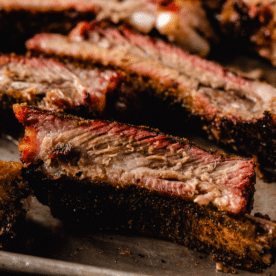
Smoked Spare Ribs
Video
Equipment
- Smoker I highly recommend this one!
Ingredients
- 1 rack spare ribs
- 2 teaspoons Hey Grill Hey Rib Rub recipe link in notes
- 2 teaspoons Hey Grill Hey Beef Rub or equal parts salt, pepper, and garlic powder
- 1 teaspoon coarse black pepper
Instructions
- Preheat. Fire up your smoker to 250 degrees F using your favorite hardwood. I recommend fruit, hickory, or apple wood for these ribs.
- Trim. Remove the large segment of bones on top of the ribs, the thin flap and membrane on the back of the ribs, and the tail end of the ribs.
- Season. Sprinkle all sides of the ribs with Rib Rub, Beef Rub, and black pepper.
- Smoke. Get those ribs on your smoker and let them cook for at least 4 hours before you open the lid and start checking on your ribs. No spritzing, no wrapping, no saucing, NO PEEKING! Continue to smoke until they reach an internal temperature of 200-205 degrees F and are tender when you bend them.
- Rest. Remove the ribs to a cutting board. Let them rest for at least 10-15 minutes before slicing and serving.
Notes
- Purchase it from the store HERE: Rib Rub
- Make it from scratch using this RECIPE: Best Dry Rub for Ribs
Nutrition
Nutrition information is automatically calculated, so should only be used as an approximation.
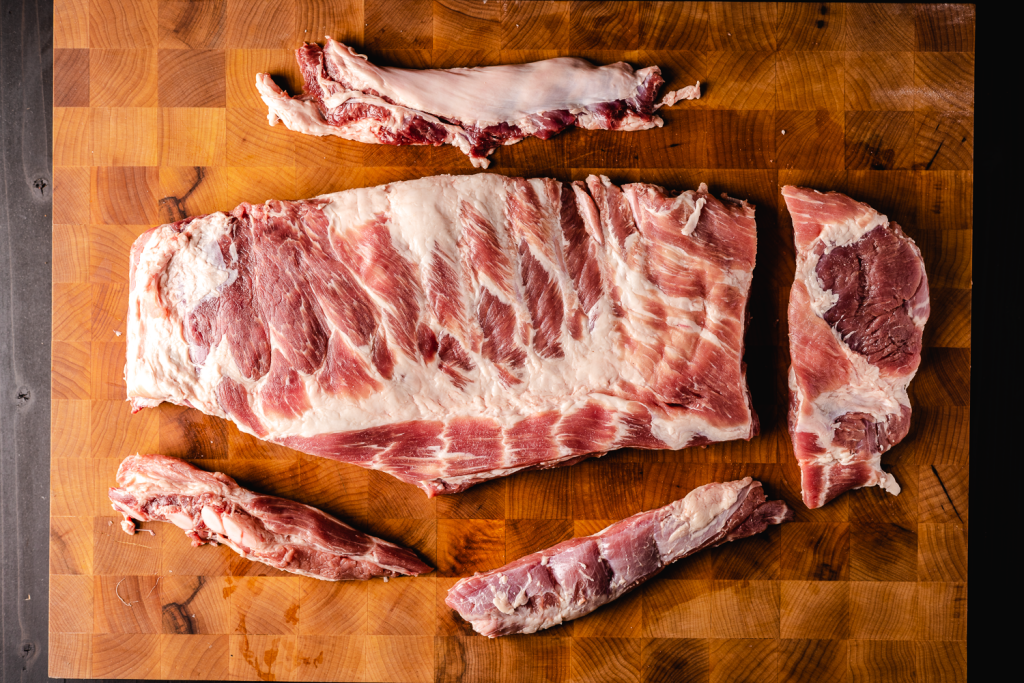
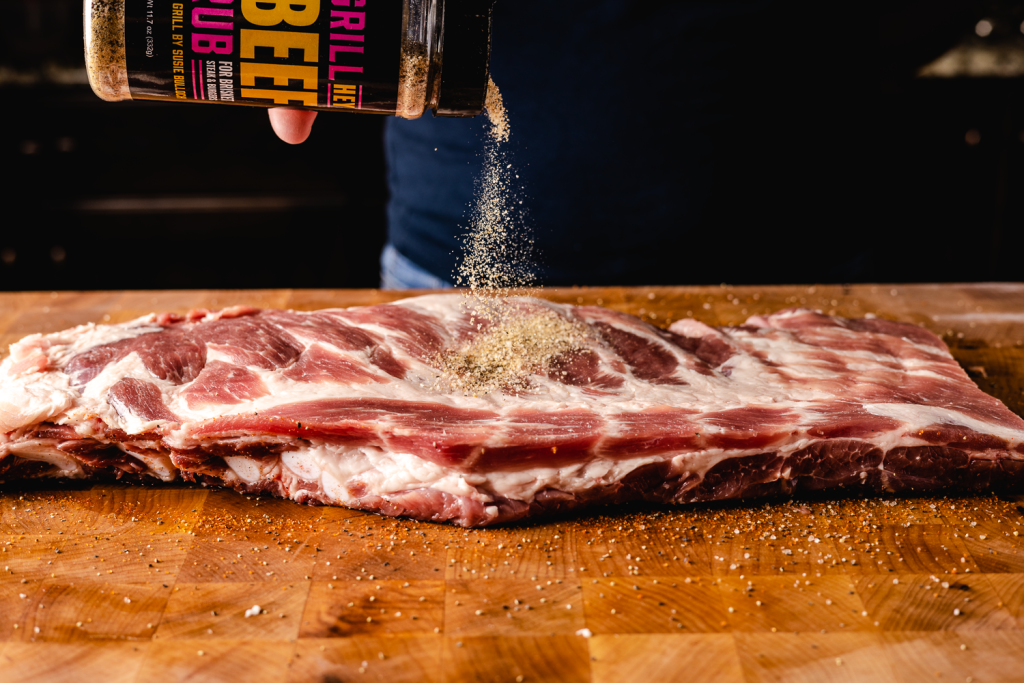
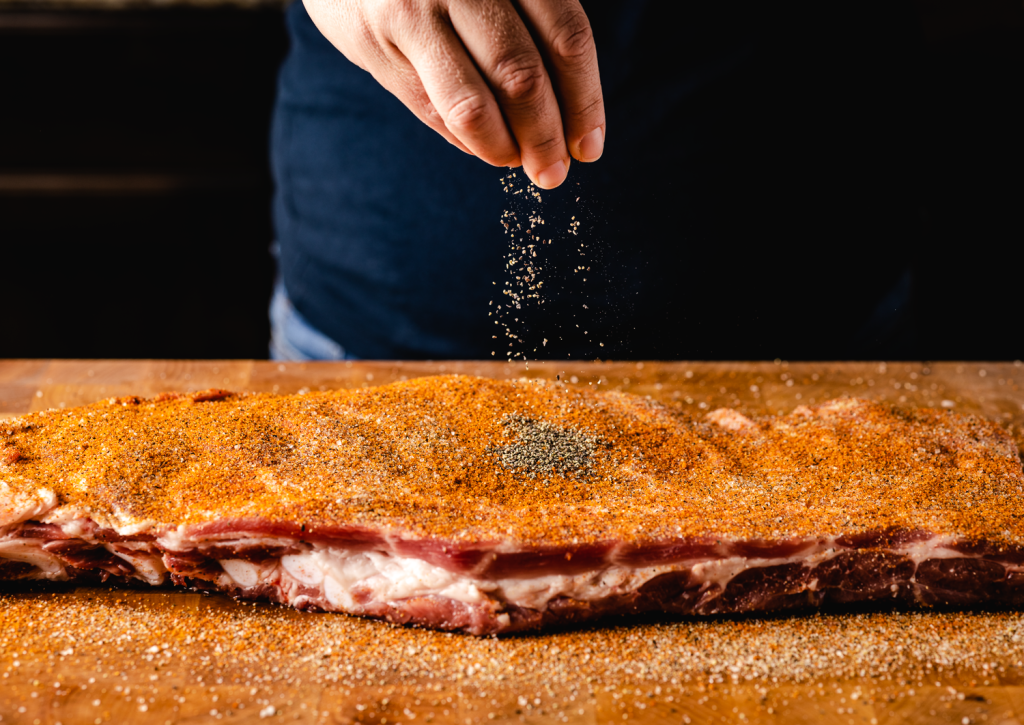
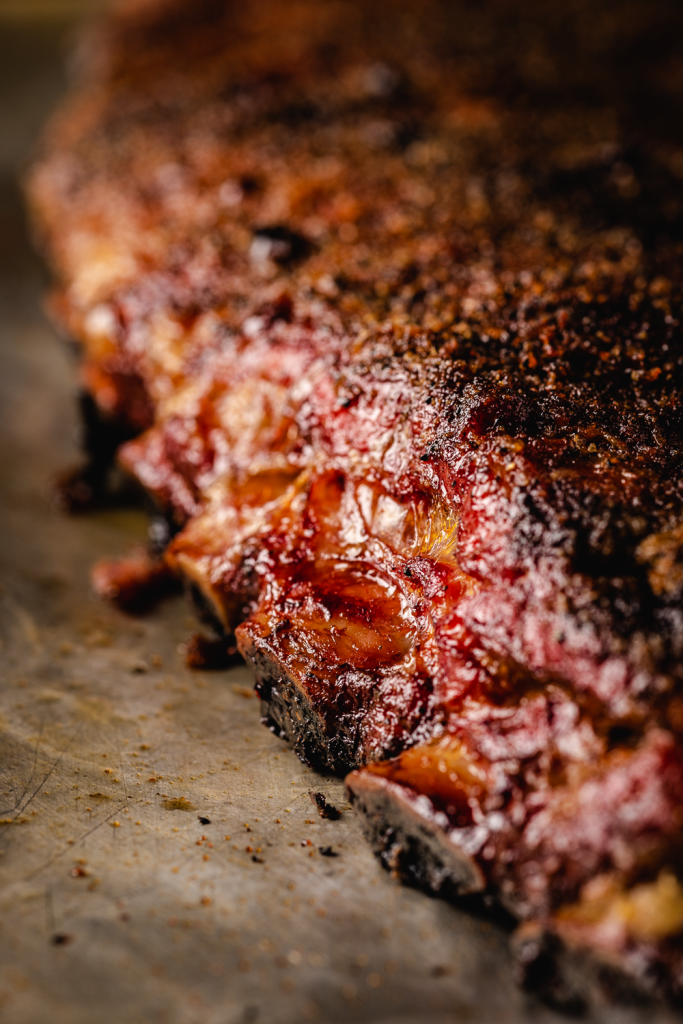
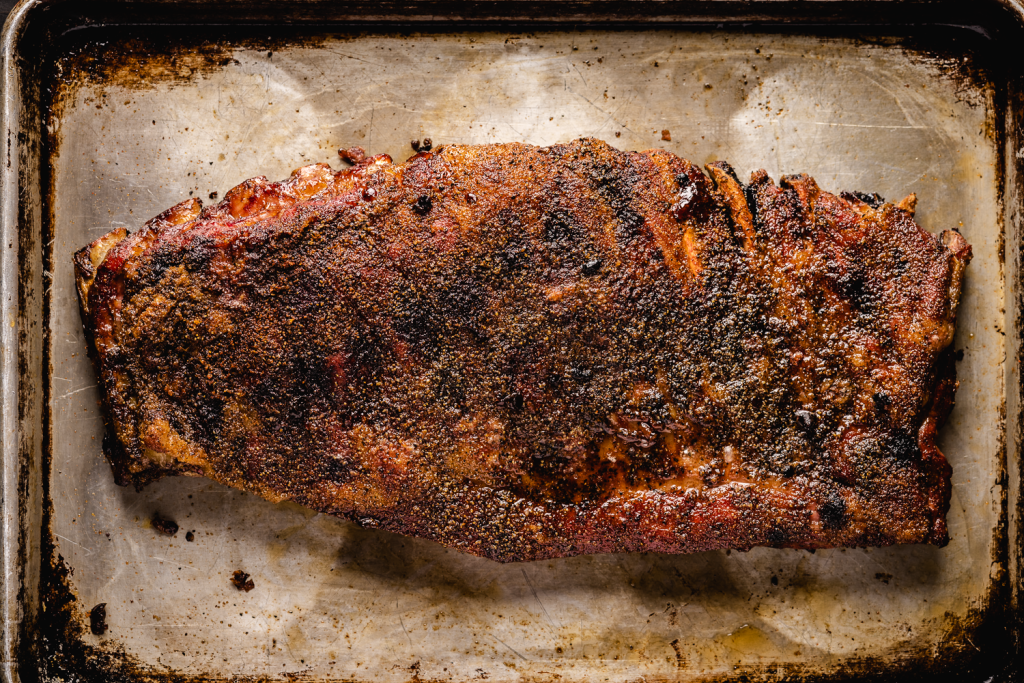


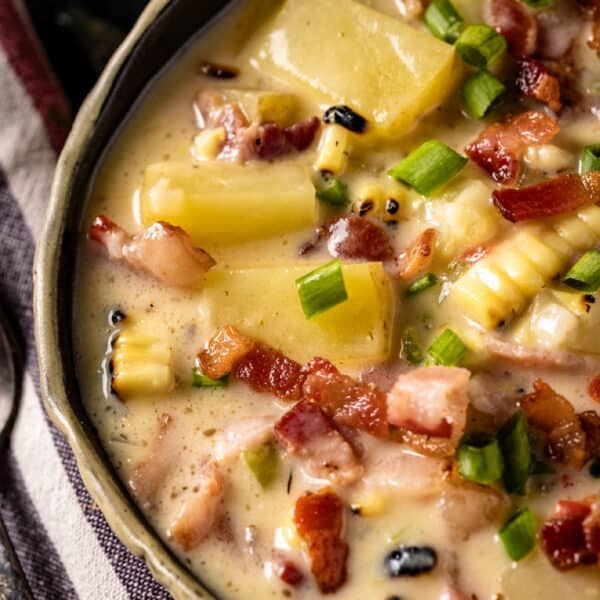
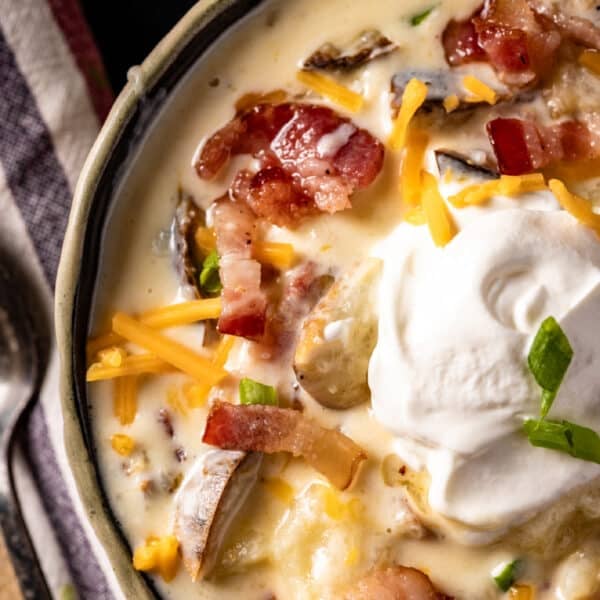

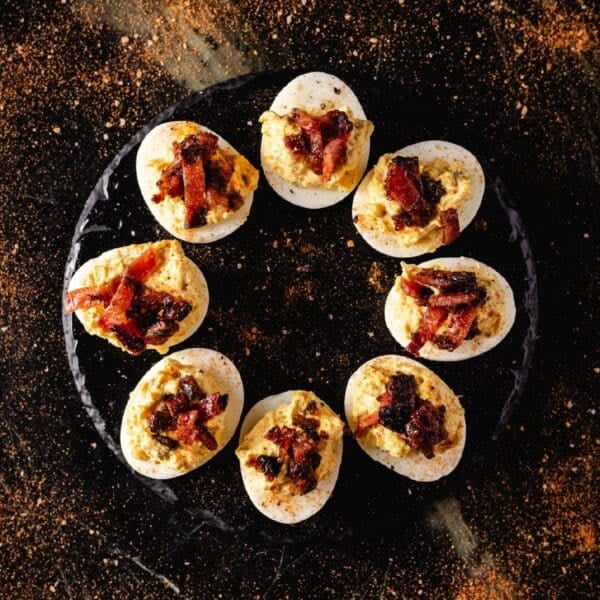





Amazing Ribs!! Thank you for the tutorial!
Hey, Grill, Hey,
I don’t care what anyone else thinks about your recipe or method but I just smoked the best pork ribs in my entire life!
I used a Cajun seasoning and hickory bacon seasoning as a dry rub and then let it set for about 4 hours. After that, I heated up the ol’ Z-grill smoker to about 225-235, dashed the rack of ribs with some additional fresh ground black pepper with some coarse kosher salt and threw those bad boys on the smoker. Right at 4 hrs (I only peeked once to get a pic for my buddy), I took a temp which was right at 205°F and then I wrapped them and let ’em set for about 20 minutes.
I made some spicy coleslaw while I patiently waited and then I unfurled the butcher block paper…OMG! Heaven dropped into my kitchen!! It was a perfect combo for my dinner. I will be doin’ this again.
Kudos and thank you!
I smoked some spare ribs using this recipe and the ribs were a little disappointing. I guess I’m a fall off the bone guy. These ribs didn’t have the wow factor that I got using the 3-2-1 method but I like the simplicity of this recipe & basting the ribs. Maybe “spare” was the operative word, these just didn’t seem meaty. I’m going to try this recipe with baby back ribs and see if I get better results.
I like your website and the information & recipes that you offer!
Sorry to hear it didn’t end in the result you wanted. You can leave them on a bit longer for a more fall-off-the-bone finish.
Holy moly the advertisements on this page are ridiculous! How is a person supposed to read anything?
I’m sorry for the ad experience. Unfortunately, ads allow the site is able to run so you can access all the recipes totally free. If you want an ad-free experience, I’ve got some awesome classes over at The Grill Squad.
I changed my browser to Duck Duck Go and I don’t get any advertisements.
I get my pork on when the coals are lit eñough to kéep burning. Start with a few coals and put more on as needed. I try to get my smoker up to 200°! No basting or wrapping and smoke 45 minutés to an hour a pound!
Answered a ot of questions for me. Thanks Cook time 4.0rs and no peaking. LOL BUT I DO IT AL OF THE TIME EVERY HOUR.